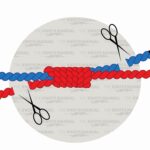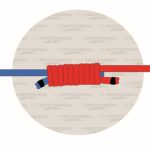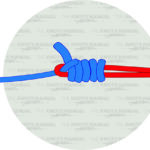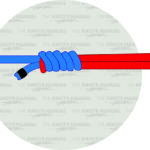A Seaguar knot connects a monofilament line to a fluorocarbon leader. It’s reliable and can be tied in under a minute, which is why it has become popular among fishermen. The Seaguar knot is also great when using low-visibility leaders.
Seaguar Knot: Quick Tying Guide
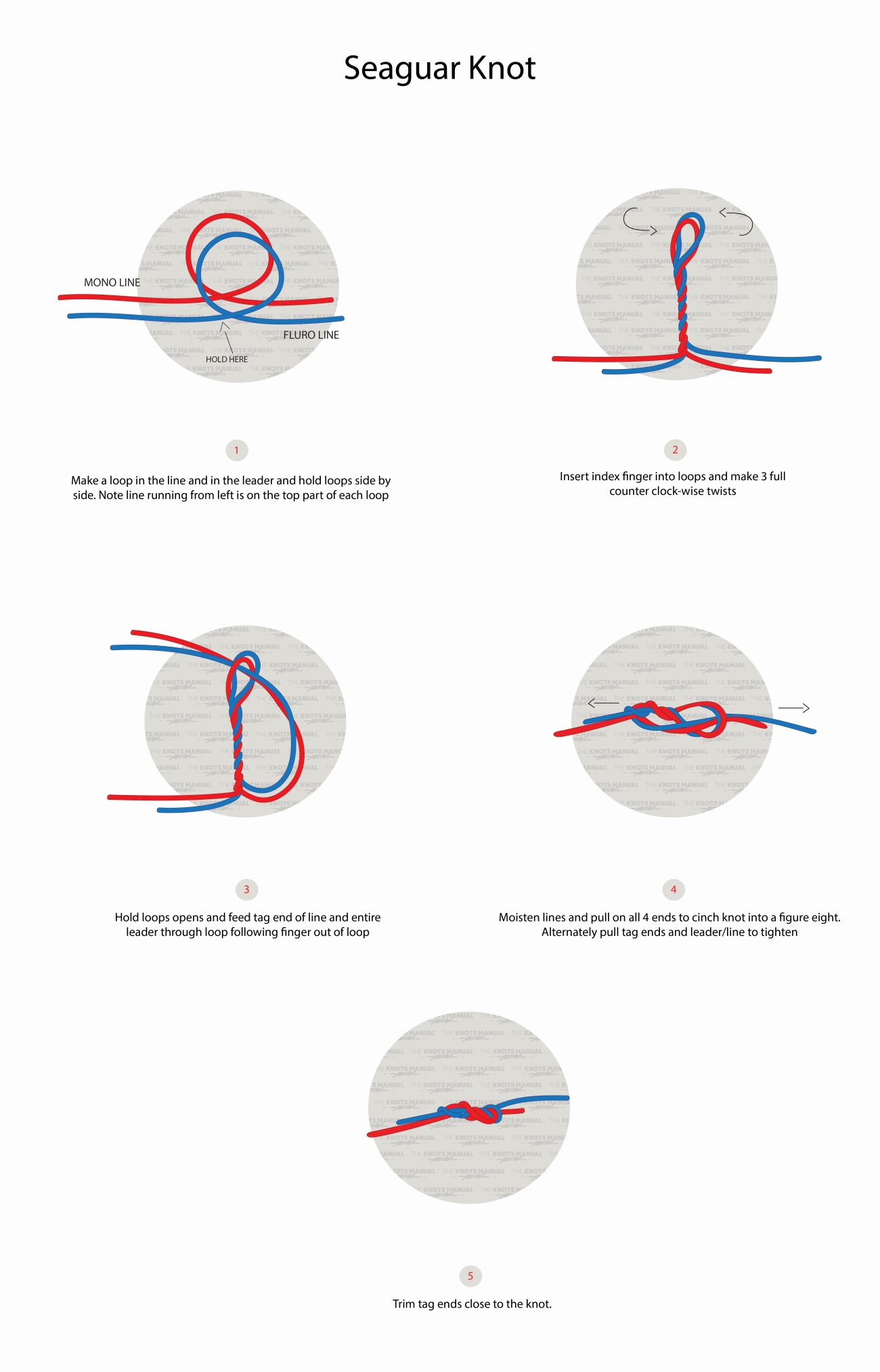
To tie a Seaguar Knot, lay the mono and fluoro lines parallel. Create a loop and make three counterclockwise twists. Next, grab your tag ends and fluoro carbon leader and bring them through the loop, creating a figure 8. Moisten the lines and pull tight. Lastly, trim off the excess tag ends.
The Pros and Cons of the Seaguar Knot
The Seaguar Knot was first introduced to fishermen by fluorocarbon line maker Seaguar, hence its name. The knot is thin, reliable, easy to tie, and has one of the highest breaking strengths. However, it may not be as strong as the Blood Knot. It also works best with lines of similar diameter and may slip if used with a braided line.
Knots Similar to the Seaguar knot
Blood Knot – The blood knot joins a braided main line to a fluorocarbon leader. It’s popular for fly fishing.
Clinch Knot – A clinch knot secures a fishing line to a hook, lure, or swivel. It’s ideal for attaching a smaller diameter tippet to a heavy wire hook.
Uni Knot – The Uni Knot can attach two lines or be used for snelling.
Arbor Knot -The arbor knot is an excellent choice when attaching a fishing line to a saltwater reel with a new line. It can be done with mono or fluoro, allowing for a tight connection around the spool.
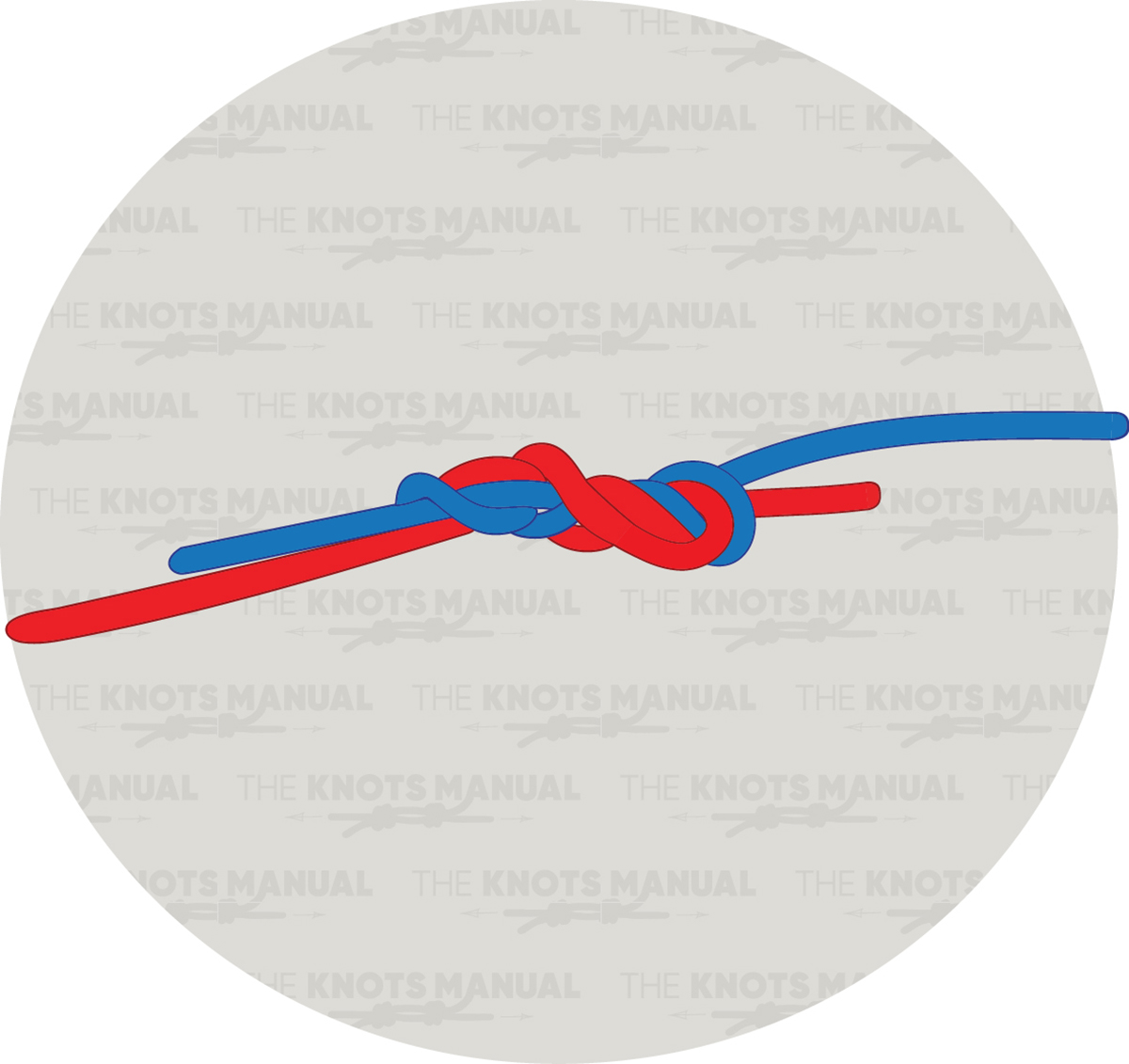
Step 1:
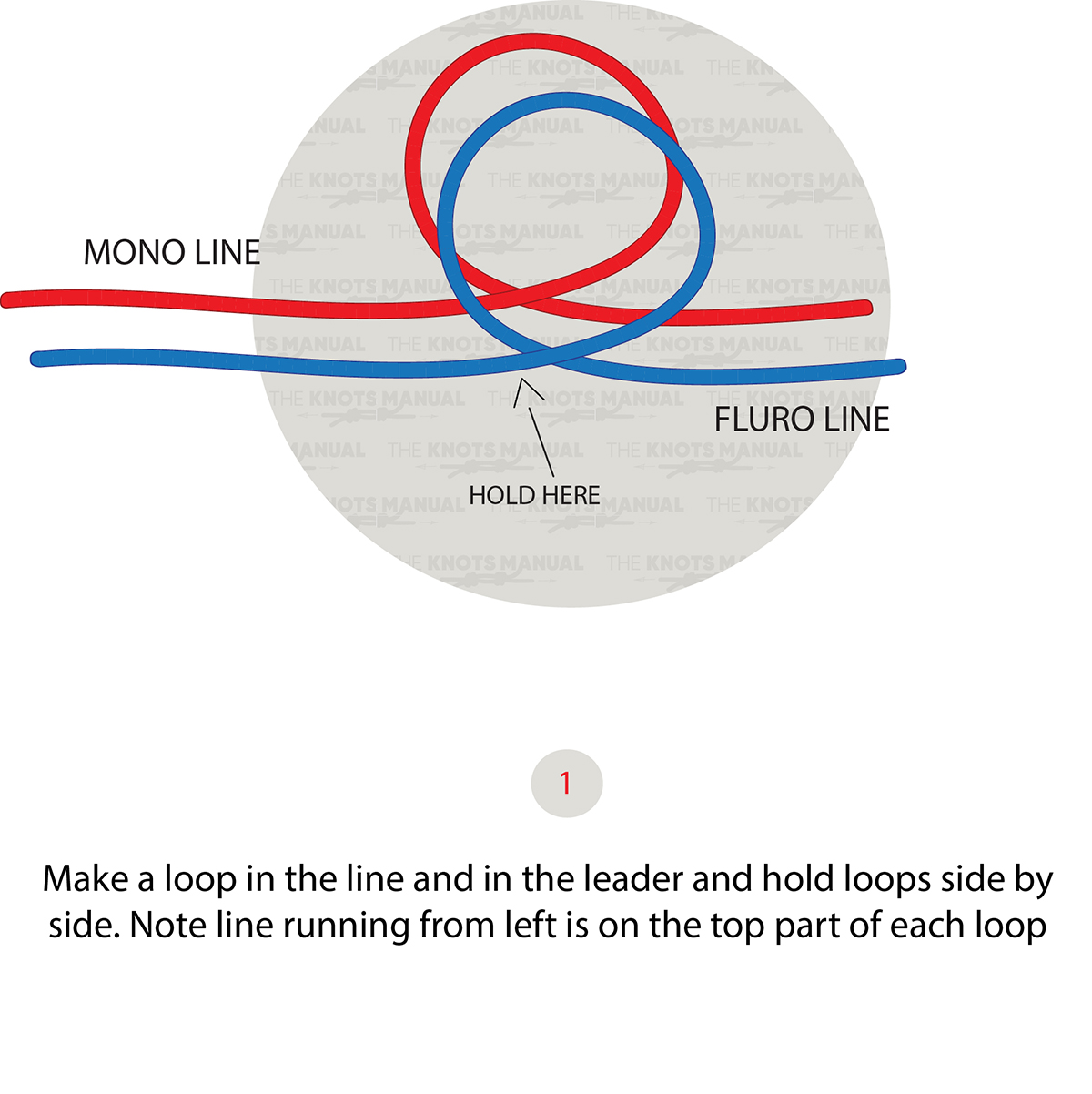
Make a loop with the mono and fluoro lines. Hold them side by side. The line that is running from the left should be on the to
Step 2:
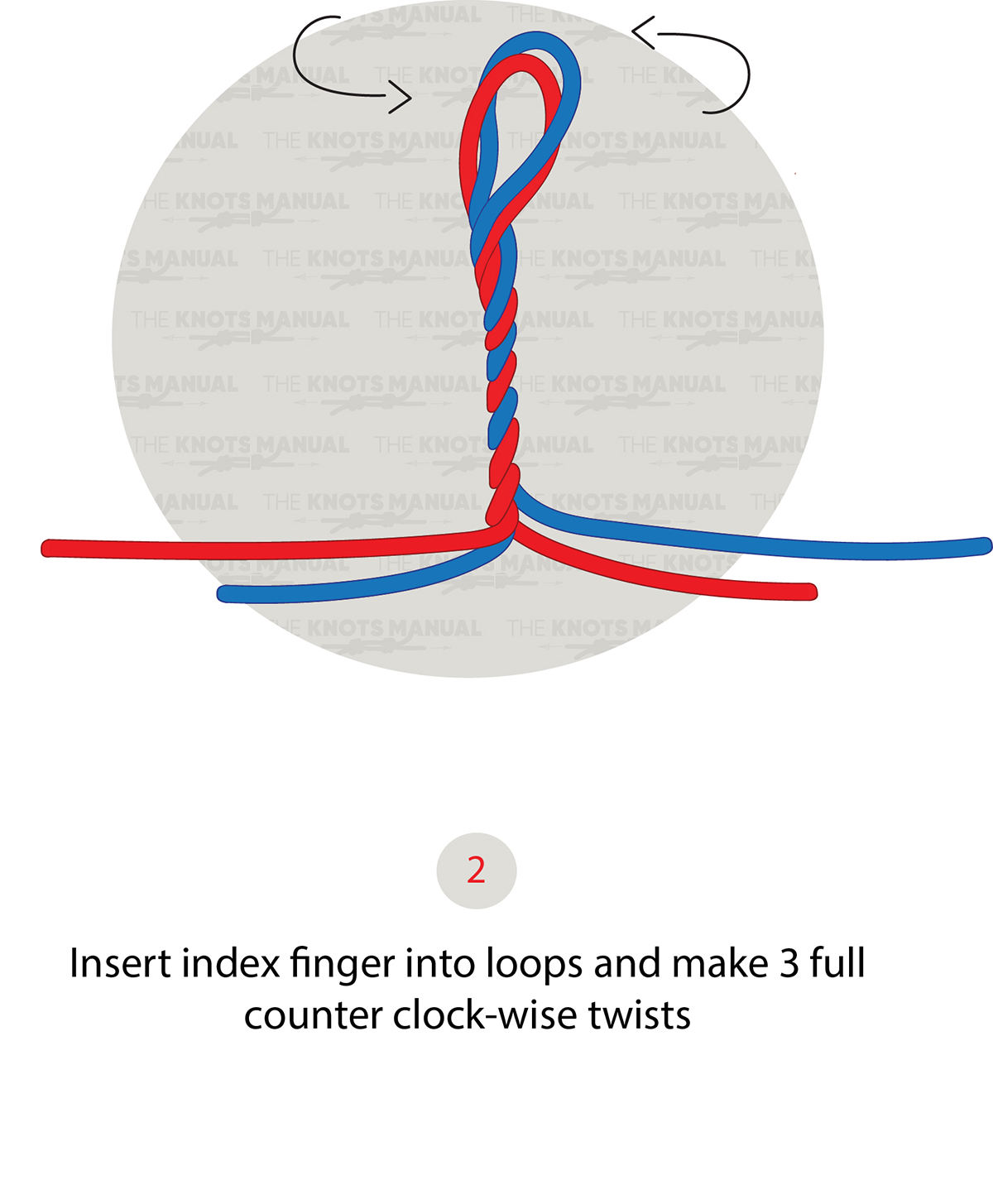
Place index finger in the loop and make three counterclockwise twists.
Step 3:
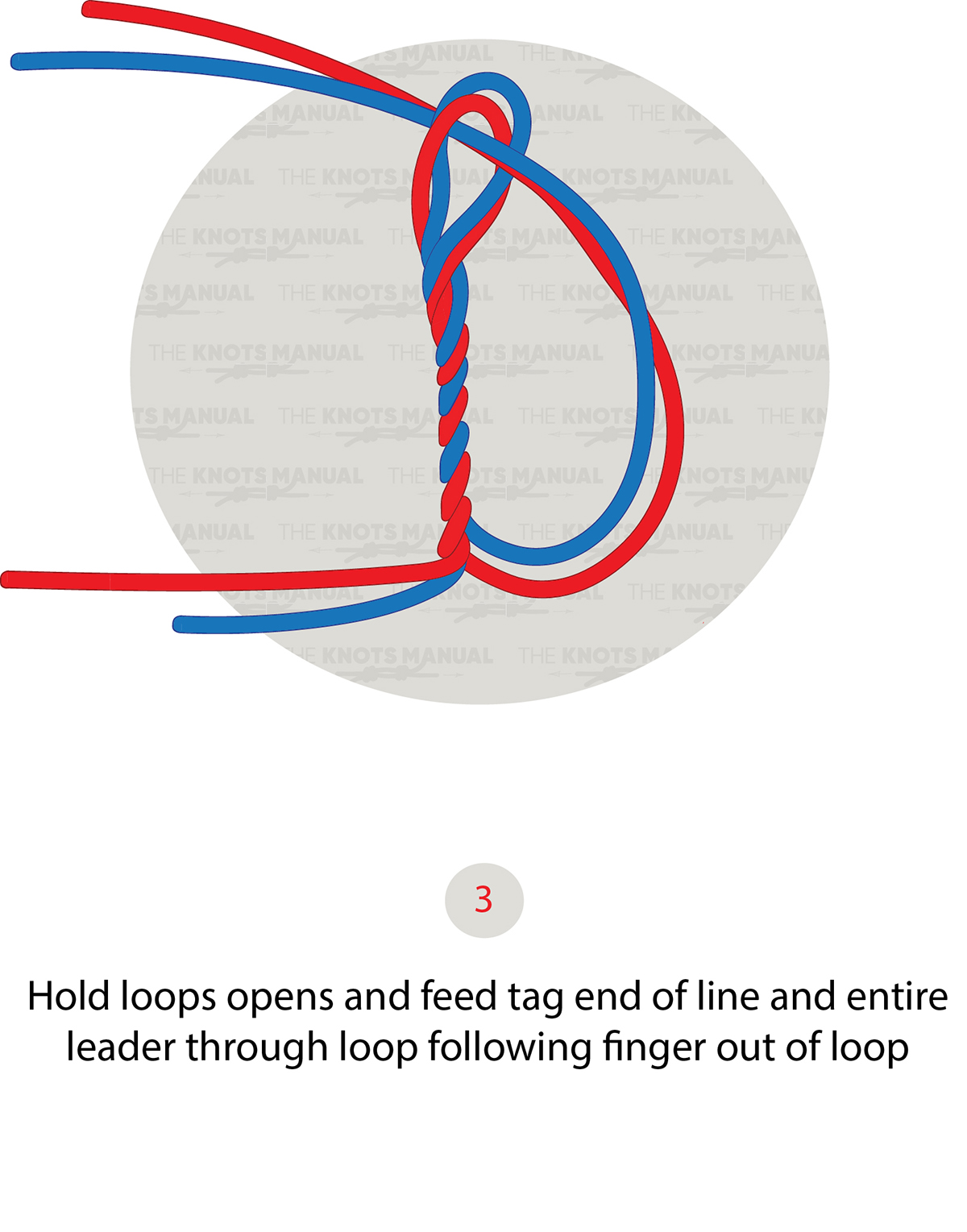
Open the loops and insert the tag end of the line and the entire leader through the loop.
Step 4:
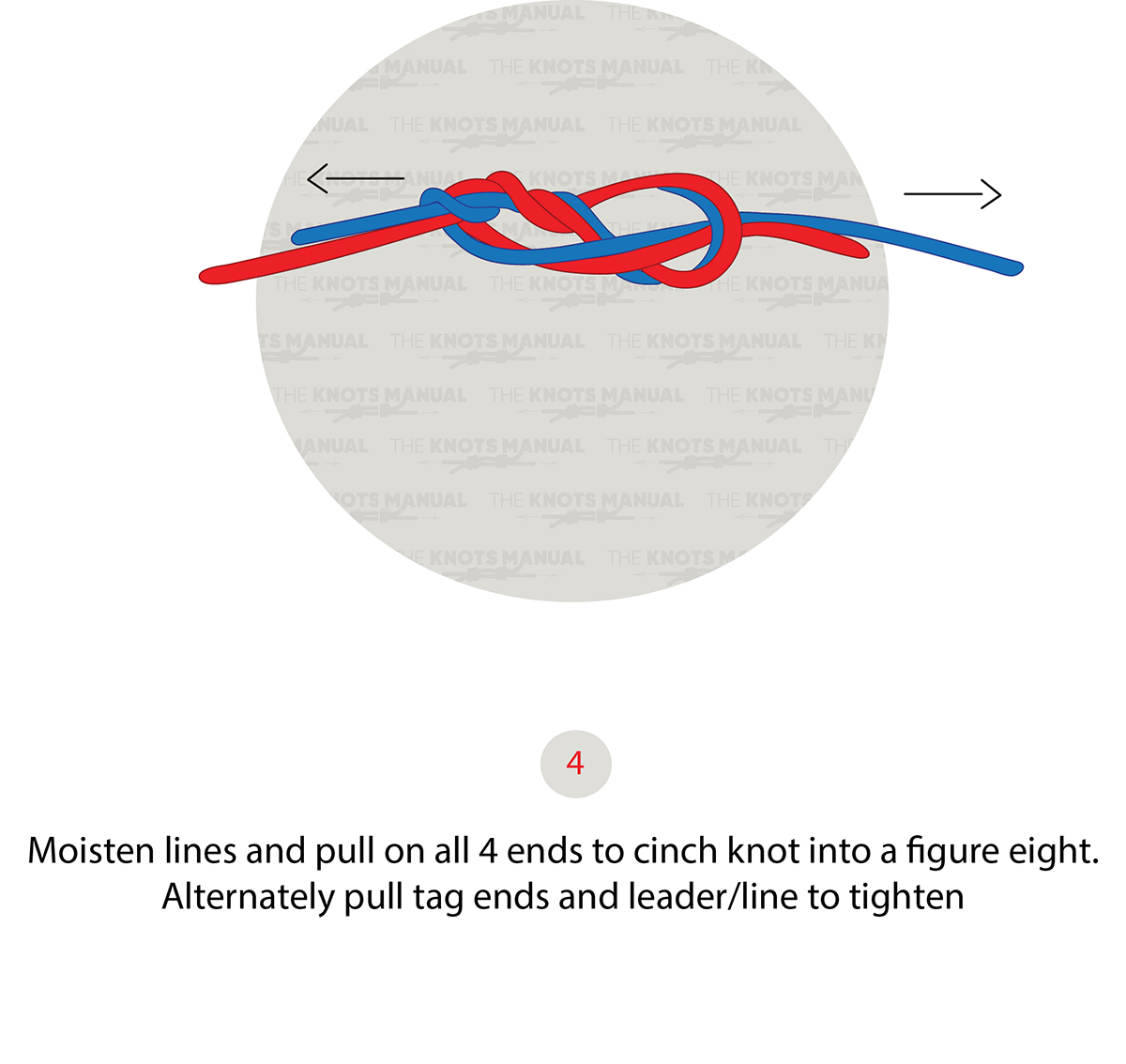
Lubricate the lines. Pull on all four ends to create a figure 8. (Alternatively, pull the tag ends and the leader line to make a tight knot.)
Step 5:
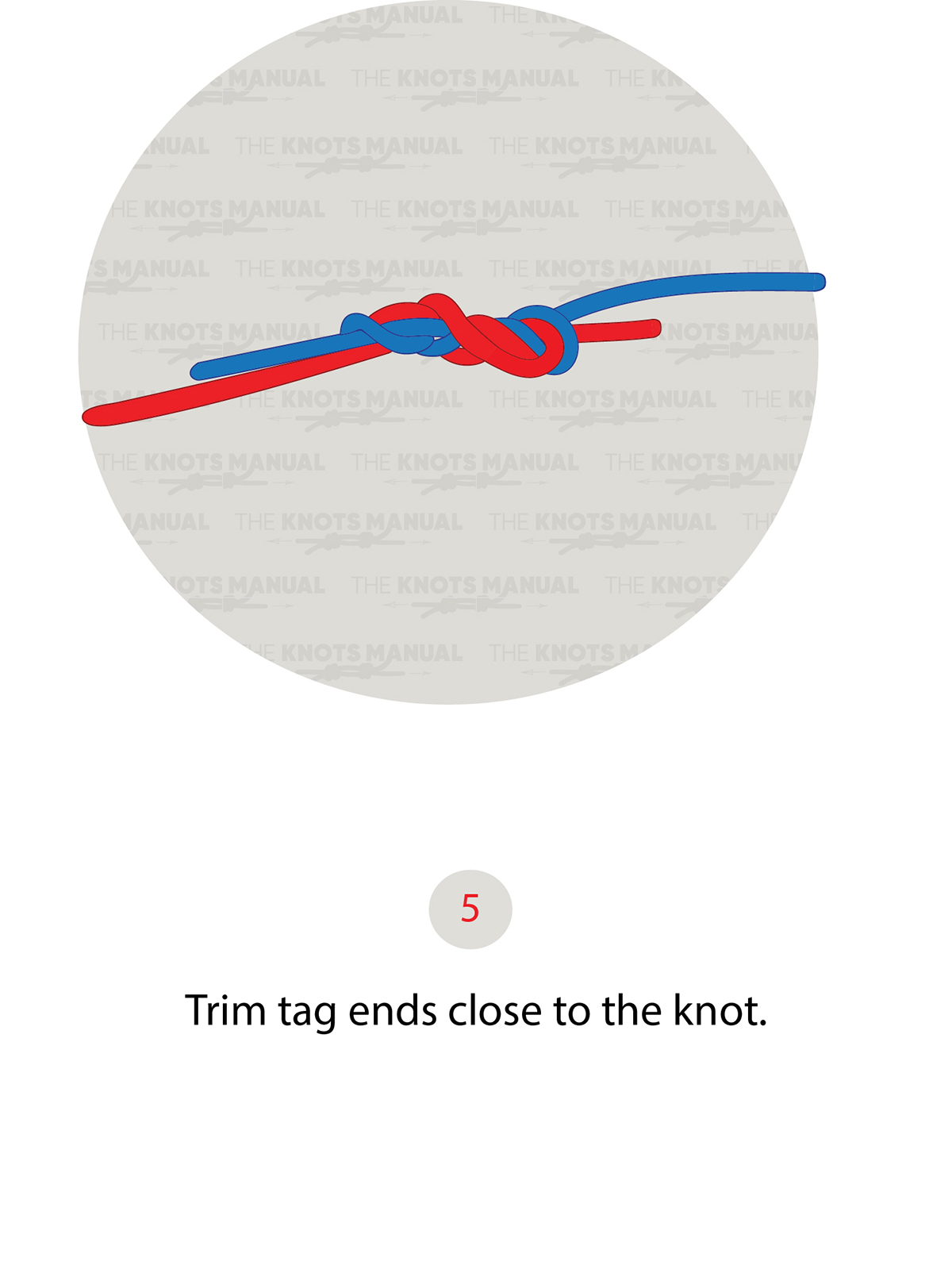
Cut off the excess tag ends.
